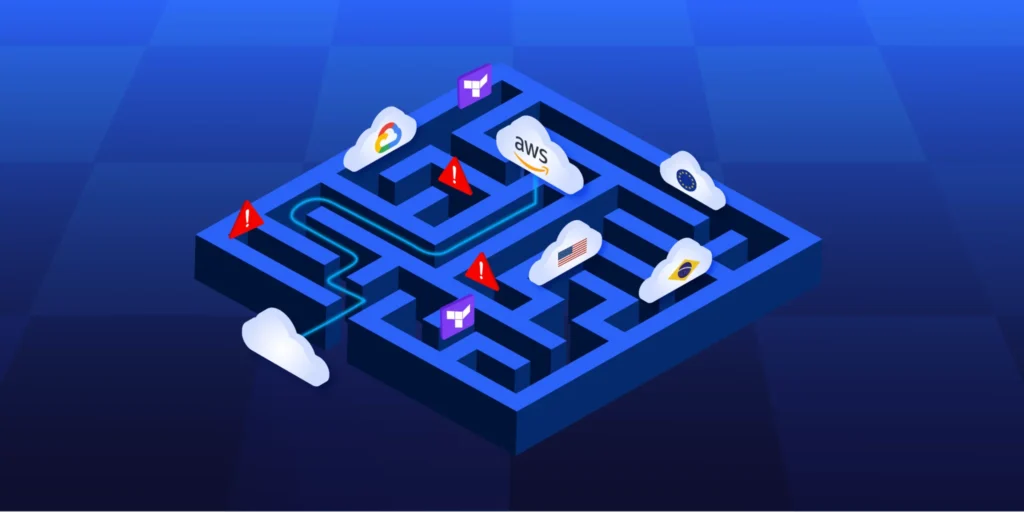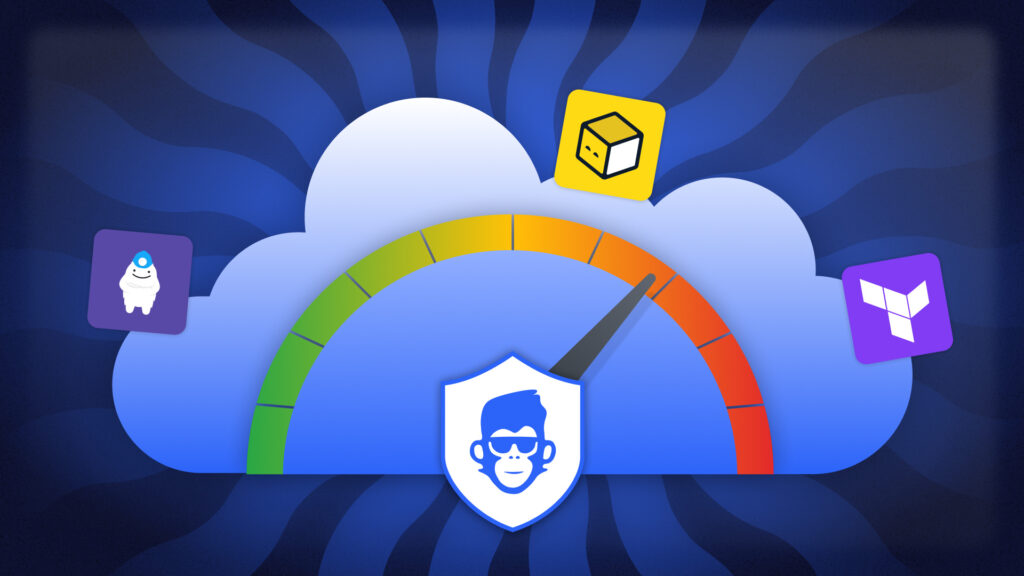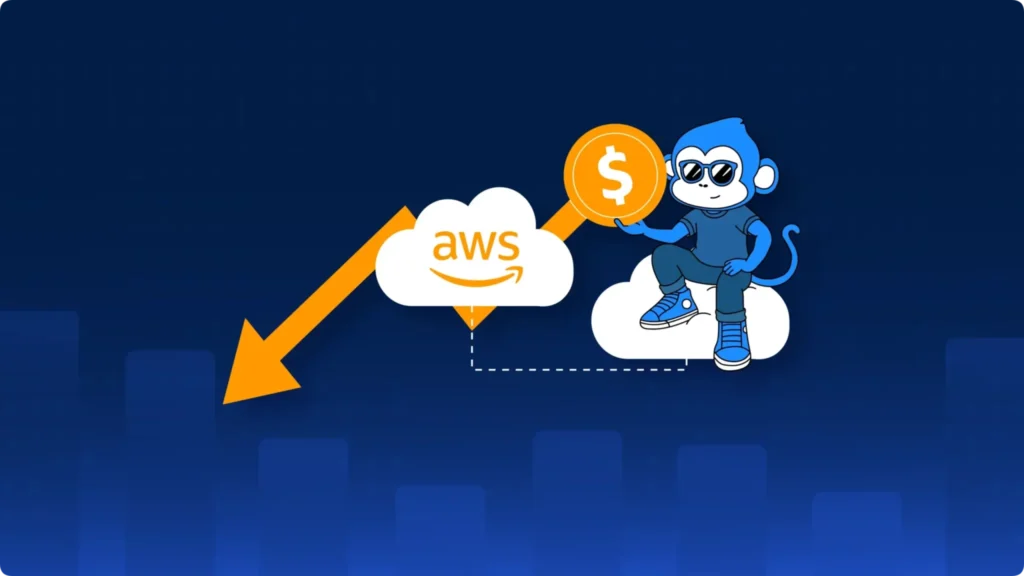Today’s biggest enterprise bets – AI, global scale, real-time everything – don’t just run on cloud infrastructure. They depend on it. But most enterprise Enterprise Cloud Control still operates in a state of reactive chaos. Cloud sprawl. Shadow resources. Security risks hiding in plain sight. Infrastructure built on the best intentions… all held together by duct tape and drift. Now, in 2025, the proliferation of enterprise AI has raised the stakes–and risks–even further. The speed of change has outpaced the operating models supporting it.
This must be the turning point—**where cloud teams shift from firefighting to engineering innovation, and consequently, from chasing tickets to delivering at scale. When the long-standing promise of infrastructure-as-code. becomes a strategic advantage.
So how do enterprises do it?
[This article was originally published on Dzone]
TL;DR – Enterprise Cloud Control
Enterprises chasing AI and scale won’t win with more tools—they’ll win by turning infrastructure into standardized infrastructure-as-code. The real advantage isn’t more cloud—it’s governed, self-healing infrastructure that replaces firefighting with execution.
Recap Table: Strategic Objectives Mapped to Infrastructure Phases
| Framework Phase | Primary Business Goal | Supporting Outcomes |
|---|---|---|
| Phase 1: Total Visibility | Reduce Cost | Identify shadow/zombie infra, baseline for governance |
| Phase 2: Resilience by Default | Ensure Resilience | DR confidence, MTTR reduction, SLA alignment |
| Phase 3: IaC Standardization | Strengthen Compliance & Security | Traceable changes, audit-ready, secure SDLC |
| Phase 4: Guardrails + Self-Service | Accelerate Product Delivery | Developer velocity, governed self-service, reduce toil |
| Phase 5: Remediation & Optimization | Enable Innovation at Scale | Infra quality loop, cost and security improvements, agility |
This framework lays out the answer. Each phase is designed to help cloud teams regain—and sustain—control, while delivering measurable outcomes that tie directly to enterprise goals: cost, compliance, resilience, delivery, and innovation.
Let’s get into it.

Enterprise Cloud Control – Phase One: Total Visibility (Day 1)
Why It Matters to the Enterprise
Without real-time visibility, cloud infrastructure becomes unmanageable. You can’t reduce cost, enforce policy, or move with confidence if you don’t know what’s running, how it’s configured, or who changed it. Visibility isn’t just about control—it’s about enabling accountability across finance, engineering, and security.
What Cloud Teams Need to Do
Inventory everything—across every account, every region, and every service. Cloud teams need a real-time, config-aware map of their infrastructure, complete with drift detection, tagging coverage, and change tracking.
What This Phase Delivers (and What’s at Risk Without It)
Done right, visibility delivers immediate impact: zombie resources are shut down, shadow infra is surfaced, and spend is traced back to owners. Security teams spot misconfigurations. Compliance teams finally get a reliable baseline.
Otherwise, teams operate in the dark – making decisions based on guesswork, wasting budget, and leaving critical gaps unaddressed. What’s hidden stays risky. What’s visible gets resolved
What Visibility Unlocks
Visibility makes everything else possible: governance, automation, self-service, and continuous improvement. It’s the foundation for any cloud control strategy worth the name. And every big enterprise bet worth pursuing.

Phase Two: Resilience by Default (Days 1–7)
Why It Matters to the Enterprise
Every executive cares about uptime—because the business depends on it. Customers don’t care why something broke. Boards don’t wait for excuses. Resilience isn’t just an engineering goal—it’s a business imperative. And in regulated industries, it’s a compliance mandate.
What Cloud Teams Need to Do
Establish automated, daily snapshots of your infrastructure state with Terraform, not just app data. These snapshots must capture what’s deployed, how it’s configured, and when it changed, so rollbacks are always possible and always provable.
What This Phase Delivers (and What’s at Risk Without It)
With resilience built in, incidents become recoverable events—not existential threats. A deleted resource? Rolled back. A bad deploy? Reversed. DR posture becomes measurable and reportable. Compliance teams have evidence, not assumptions.
Without it, every change is a gamble. Recovery relies on personal knowledge or manual reconstruction. Downtime lingers. Trust erodes. And when auditors or leadership ask for your DR posture, “We think we’re covered” won’t cut it.
What Resilience Unlocks
As a result, resilience gives cloud teams the confidence to move faster, while providing the infrastructure backbone required for automation and standardization to work at scale.
📚 Read More about Cloud Governance Framework:
- Cloud Governance Framework – what is Cloud Governance and Four Key Pillars it Framework
- Engineering Toil – The Real DevOps Bottleneck –
- Cloud Chaos – Cloud Chaos: What It Is and How to End It

Phase Three: Infrastructure-as-Code Standardization (Weeks 2–4)
Why It Matters to the Enterprise
Business velocity is increasingly constrained by infrastructure velocity. Without a scalable way to deliver infra, every product, AI initiative, or regional expansion risks delay. Codifying infrastructure enables repeatability, accountability, and security—at scale. It’s how infrastructure becomes a platform, not a bottleneck.
What Cloud Teams Need to Do
Turn live infrastructure into code—using Terraform or a similar framework—so that every change is versioned, reviewable, and auditable. Then shift to Git workflows and CI/CD pipelines, treating infrastructure like software.
What This Phase Delivers (and What’s at Risk Without It)
With infrastructure defined as code, delivery becomes structured and safe. Manual, invisible changes are eliminated. Compliance becomes provable. Security and operations teams gain traceability. The result: faster delivery, fewer errors, and lower overhead.
Without it, cloud teams stay stuck in reactive mode—fixing things manually, struggling to scale, and constantly re-doing work. And any infrastructure knowledge lives in engineers’ heads—not in systems that can scale or survive turnover.
What Standardization Unlocks:
Standardization is the unlock for both governance and automation. Once infrastructure lives in code, you can begin enforcing policies, testing changes, and delivering with confidence.

Phase Four: Guardrails and Self-Service (Weeks 5–8)
Why It Matters to the Enterprise
Faster infrastructure delivery drives faster product delivery. But speed without control is a risk no CISO or CIO can accept. Guardrails ensure security and compliance aren’t sacrificed for velocity. Self-service unlocks scale—without adding headcount or friction.
What Cloud Teams Need to Do
Build policy enforcement into the delivery pipeline using policy engines. Then enable developers to deploy infrastructure via approved, compliant blueprints—through a governed self-service portal.
What This Phase Delivers (and What’s at Risk Without It)
Guardrails protect the business. Every deployment is checked for security, tagging, cost controls, and compliance before it hits production. Developers can move faster—launching infrastructure without waiting on tickets. Cloud teams shift from gatekeepers to enablers.
Without this phase, DevOps becomes a bottleneck. Infra teams drown in tickets. Developers go around the system. Risk re-enters the environment. And the business slows down just when it needs to speed up.
What Guardrails and Self-Service Give:
This is the tipping point: velocity and control. With policy-driven self-service in place, organizations are finally ready to scale cloud operations without scaling complexity or risk.

Phase Five: Continuous Remediation & Optimization (Week 9+, Ongoing)
Why It Matters to the Enterprise
Modern cloud environments are never static. New services launch, workloads shift, teams move fast. Without continuous optimization, costs climb, drift accumulates, and security weakens. Continuous remediation ensures infrastructure doesn’t just work—it improves itself.
What Cloud Teams Need to Do
Deploy systems that continuously scan for drift, vulnerabilities, misconfigurations, and inefficiencies—and generate fixes as code. These remediations should be versioned, reviewable, and integrated with your SDLC.
What This Phase Delivers (and What’s at Risk Without It)
With remediation in place, infrastructure becomes self-healing. Cloud teams can proactively correct drift before it breaks things and fix security gaps before audits. Cost savings are surfaced and acted on automatically. Ops teams spend less time firefighting and more time building.
Without this layer, infra quality quickly degrades. As a result, teams accumulate tech debt faster than they can pay it down. Misconfigurations remain unresolved, and valuable opportunities slip by. Ultimately, the business loses ground – often without realizing it.
Remediation & Optimization Benefits:
This is where operational excellence becomes durable. Subsequently, cloud infrastructure that can monitor and optimize itself enables teams to shift from maintenance to innovation.
A Compounding Advantage of Enterprise Cloud Control
Each phase of this framework builds strategic leverage for the next. Visibility makes governance possible. Governance enables automation. Automation unlocks safe, scalable self-service. And together, they lay the foundation for continuous improvement.
This isn’t just operational maturity—it’s business acceleration. The result is an infrastructure model that reduces cost, improves resilience, supports compliance, and frees teams to deliver faster.

What’s Next: From Framework to Execution
Start by assessing where your org stands across each phase of this framework.. Don’t try to solve everything at once. Instead, identify the biggest source of risk, drag, or friction in your infrastructure delivery… and start there.
Here’s how to Enterprise Cloud Control moving:
- Run a Cloud Control Assessment
Start by assessing your current state. Measure how much of your infrastructure you govern with code. Map the drift. Expose the gaps. With this data, you can prioritize actions with confidence. - Move to IaC
Bring unmanaged infrastructure under IaC control using automated import. This creates a single source of truth—every change becomes versioned, reviewable, and auditable. - Shift to Policy-Driven Self-Service
Empower developers to launch infrastructure through compliant blueprints with guardrails built in. This allows yout o accelerate delivery without sacrificing governance. - Establish Continuous Remediation
Set up systems that detect and fix drift, misconfigurations, and vulnerabilities automatically—so your infrastructure improves itself over time.
In a year where every enterprise is chasing AI, efficiency, and scale, the real competitive advantage may be the cloud teams who’ve moved from firefighting to engineering. And an enterprise that can execute on its goals with total confidence and total control.




